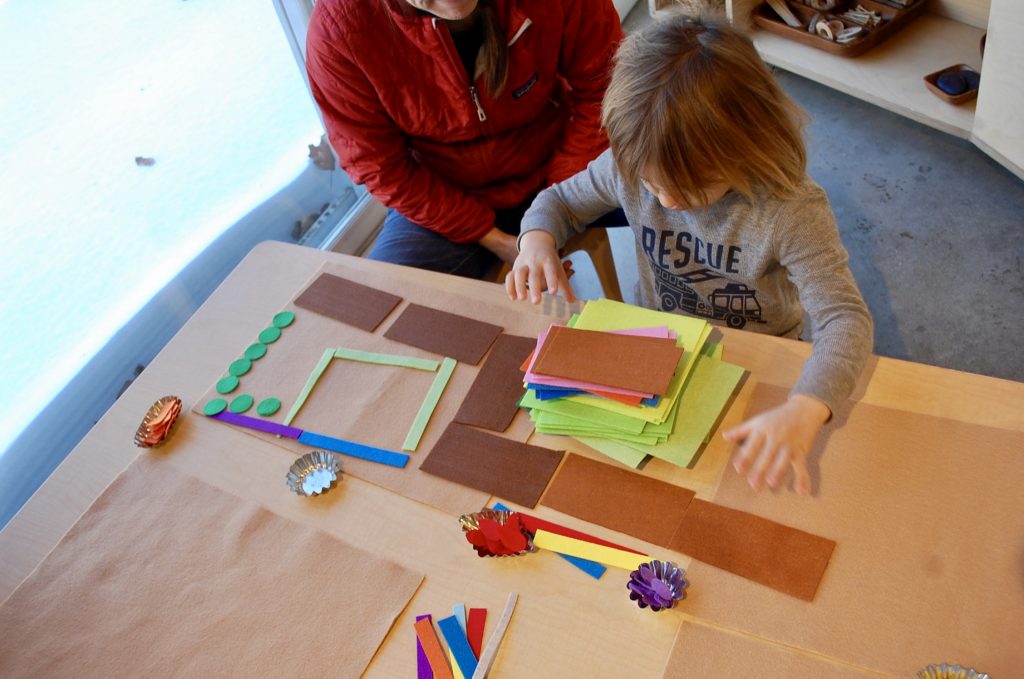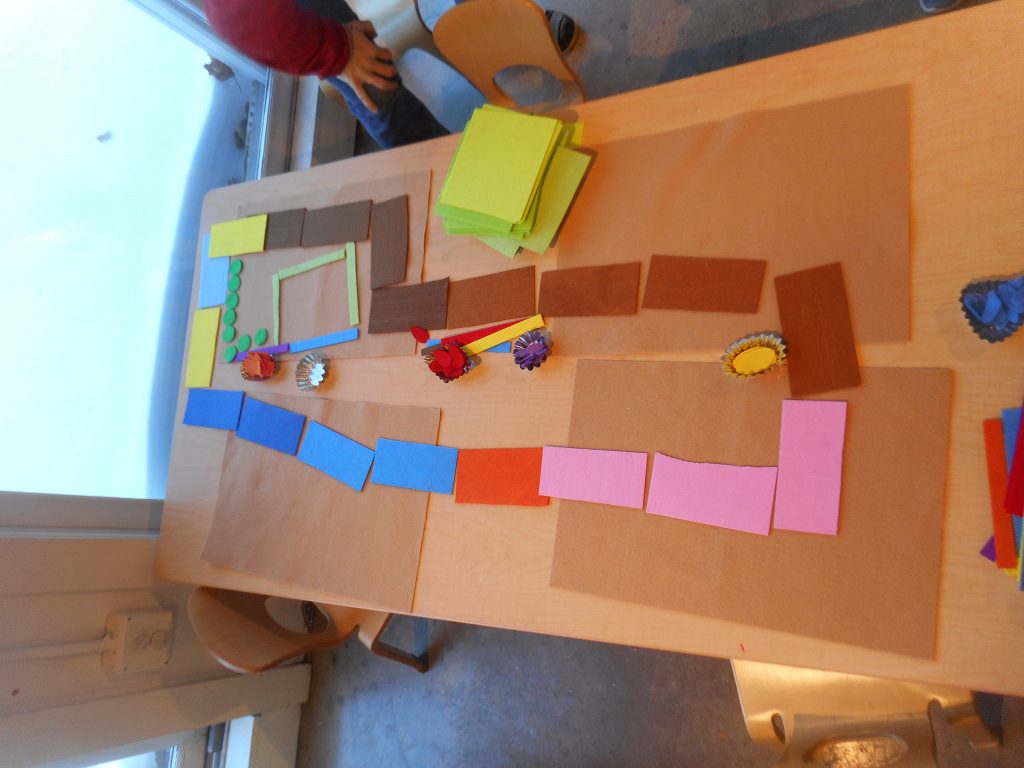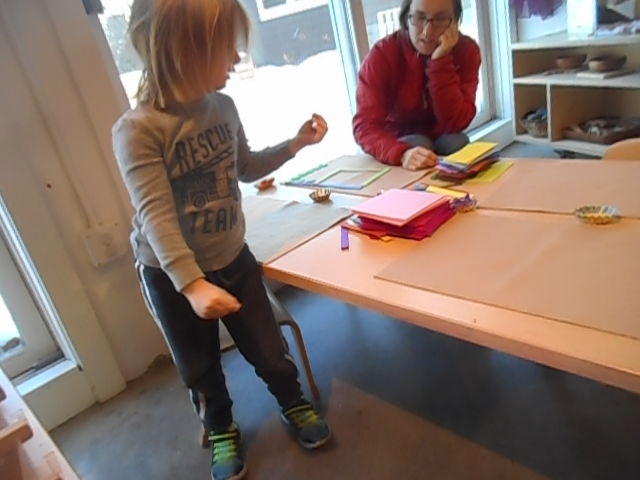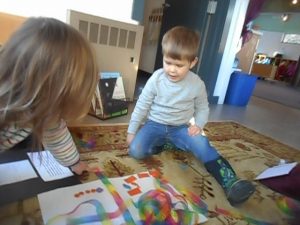Our interest in community has been gradually extending beyond the confines of LNS.
We began the year “playing the face game” in meeting before snacktime to help the children learn each others’ names, incorporating Nancy, Emily, and some sculpture faces as well. Gradually, more faces were added – sculptures, and people we have seen such as Lisa, Brad, Doug, preparators Ross and Rory at the museum. In mid-December, we laid out sheets of felt, a large gray one to represent the sculpture park, and a smaller blue rectangle, which stands for Studio Blue.
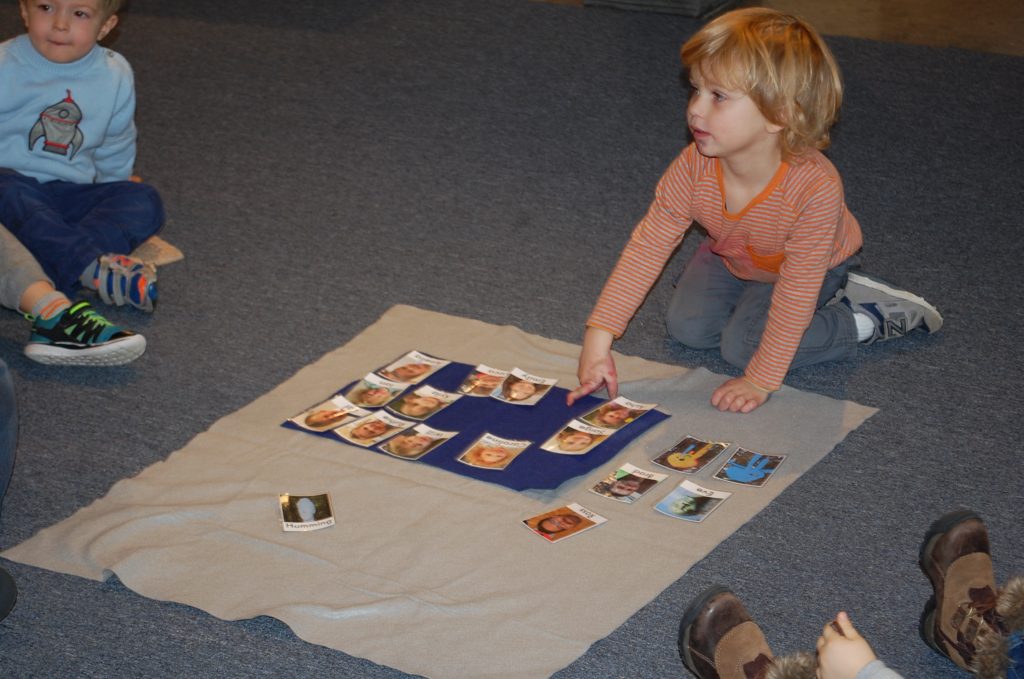
Now when we play the “face game,” each child is given two cards to lay on the sheets before going to snack, one with her picture and another one of a sculpture or a person not in Studio Blue, and it is her choice where to place those cards. Does she put her card inside the blue rectangle (indicating she is in Studio Blue) and the sculpture on the gray (the sculpture park)? Sometimes, but not always. Occasionally there are disagreements about where a child has placed her cards. In this way, we are introducing the concept of mapping to raise the children’s awareness of our greater surroundings.
We have also seen an interest in mapping outside of this game. On Dec. 5th, Cal draws this map of Route 2, his driveway, his house, and a walkway around Route 2. Cal has made other maps since then, some approximating this one, but with less detail.
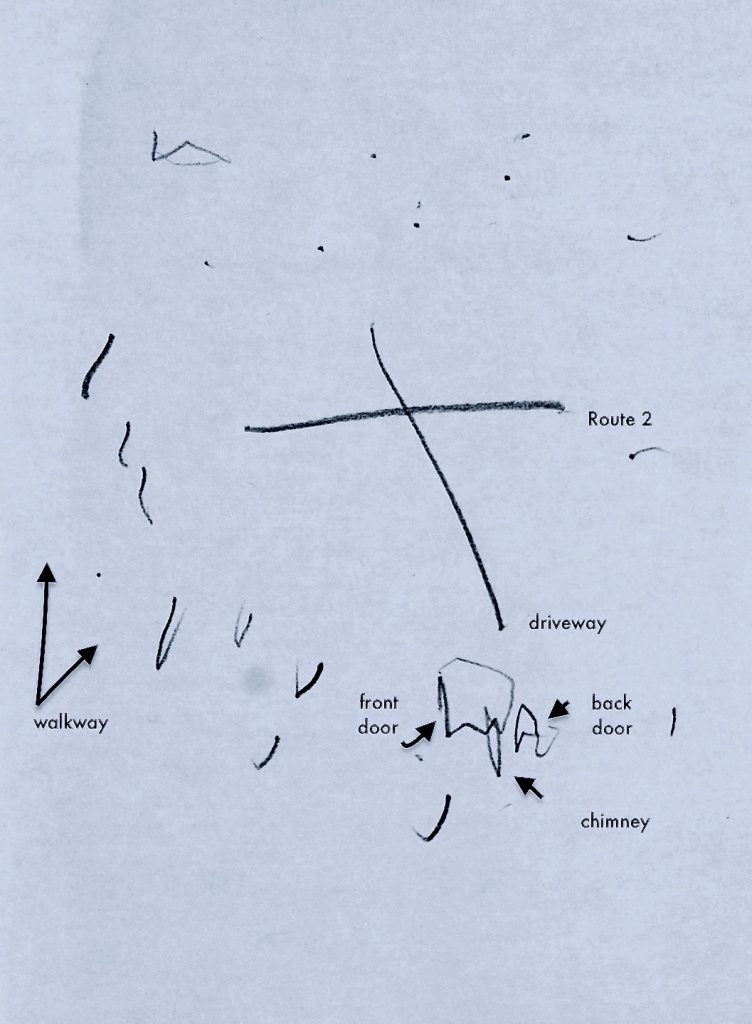
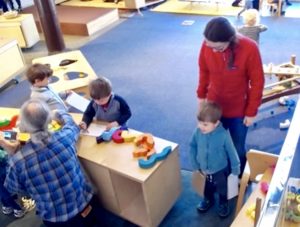 On Dec 9th, Cal makes a map of a secret house, requiring a password to enter. He shows Cailin (Travers’ mom) his drawing, saying I have to show you the way to the secret house), and they travel around the classroom, saying passwords (such as 45 C D, or Open secret house) before entering “doors” to different areas (imaginary keys are also mentioned). Luca is interested, following and watching him for part of this. Cal exclaims We’re locked into this house! We’re locked into the secret house! Yay, we got out! He approaches Mark, You’re in the trap and shows Mark his drawing, confiding: This is a map for a secret house.
On Dec 9th, Cal makes a map of a secret house, requiring a password to enter. He shows Cailin (Travers’ mom) his drawing, saying I have to show you the way to the secret house), and they travel around the classroom, saying passwords (such as 45 C D, or Open secret house) before entering “doors” to different areas (imaginary keys are also mentioned). Luca is interested, following and watching him for part of this. Cal exclaims We’re locked into this house! We’re locked into the secret house! Yay, we got out! He approaches Mark, You’re in the trap and shows Mark his drawing, confiding: This is a map for a secret house.
Diane asks Cal if he would like to recreate his original map of his house (from 12/5), using other materials.
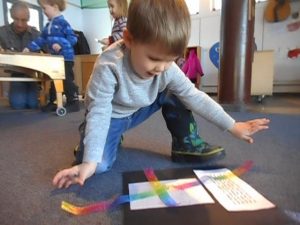 He decides on rainbow ribbons as the material for his roads. Laying a ribbon carefully on the map he had made previously, he says, That’s my driveway. He adds another ribbon. I’m going to use this one for Route 2. What should I use for my house? He now piles a handful of ribbons on top. That’s ___ in my house. It’s a bit of a jumble now, and Diane asks How do we know which part’s your house and which part’s the driveway? Cal clears off all of the ribbons and points to the original drawing: This is my driveway and this is Route 2 and this is my house. He arranges the ribbons again: Driveway, and Route 2.
He decides on rainbow ribbons as the material for his roads. Laying a ribbon carefully on the map he had made previously, he says, That’s my driveway. He adds another ribbon. I’m going to use this one for Route 2. What should I use for my house? He now piles a handful of ribbons on top. That’s ___ in my house. It’s a bit of a jumble now, and Diane asks How do we know which part’s your house and which part’s the driveway? Cal clears off all of the ribbons and points to the original drawing: This is my driveway and this is Route 2 and this is my house. He arranges the ribbons again: Driveway, and Route 2.
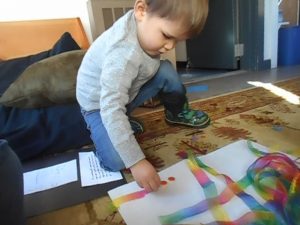 The scene shifts as Cal now recreates his map on a white piece of felt. Again, he uses ribbons for Route 2 and his driveway. Again, he piles on more ribbons for his house. This is my house, right here. Now I’m done. Then Cal notices small felt pieces in Diane’s bag. I need these. This will be a flower. These can be the windows. He places them on the felt. This is going to be my house, and this is outside. This is a window, and this is a window… he places the orange felt circles carefully– they are windows in a line, and a flower goes beside them.
The scene shifts as Cal now recreates his map on a white piece of felt. Again, he uses ribbons for Route 2 and his driveway. Again, he piles on more ribbons for his house. This is my house, right here. Now I’m done. Then Cal notices small felt pieces in Diane’s bag. I need these. This will be a flower. These can be the windows. He places them on the felt. This is going to be my house, and this is outside. This is a window, and this is a window… he places the orange felt circles carefully– they are windows in a line, and a flower goes beside them.
Ruthie watches as Cal adds felt rectangles, and then Cal explains his map to Ruthie: This is our house (ribbons), and this is windows (rectangles and round pieces) and this is a flower, and this is a chimney.
Cal’s ribbon house is in a separate location from the windows and chimney, perhaps this is a developmental stage: because the windows and chimney are outside of the house, they are not attached to it. We have seen similar thought processes before in this class, though it’s interesting that this doesn’t happen with faces. Children generally represent a face with a circle and the features inside of it. Perhaps because that’s how they’ve been taught to represent faces, but then you can’t go “inside” a head like you can with a house.
When Diane straightens out the ribbon representing Route 2, Cal replaces it, explaining, I’m moving Route 2 cause it was too close to the flower.
Ruthie points: Is this your driveway?
Cal: No, that’s Route 2. This is my driveway.
Ruthie: I think it has a bump (it does, going over Route 2 like a bridge)
Cal: Yeah, that’s a hill. It’s a roller coaster! It goes (sound effects of car going over it).
Diane: Great. Let’s hear about Ruthie’s now. (Diane has offered Ruthie materials, too)
Cal: Yeah.
Ruthie: Mine has blue and…purple pickles. And these are roofs. Take a picture of it.
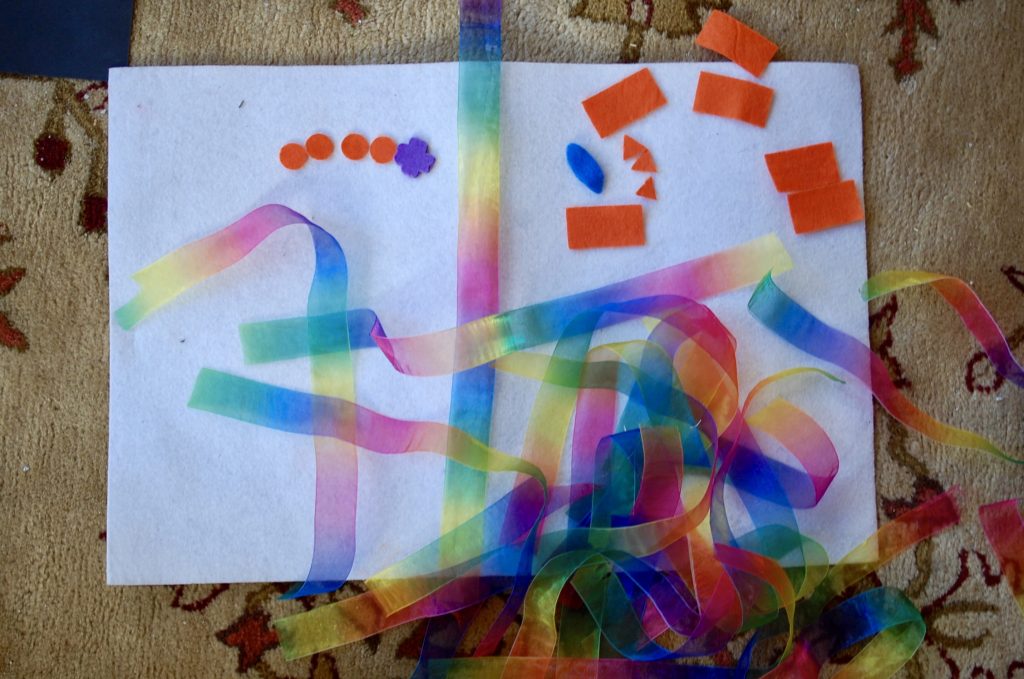
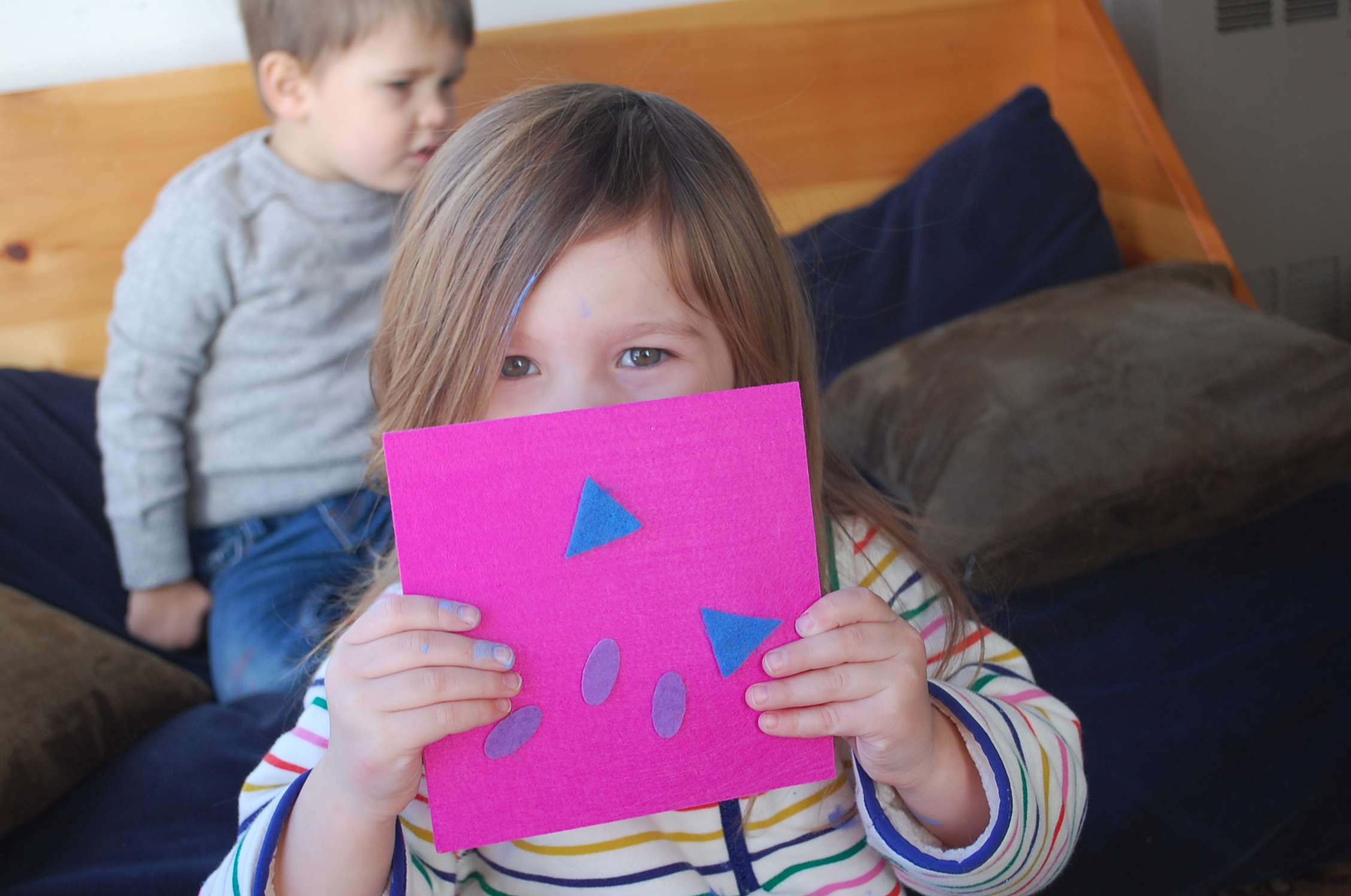
There are other ways to think about mapping…
